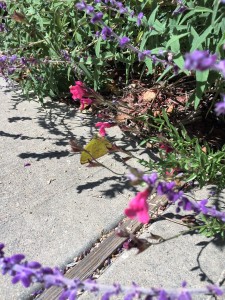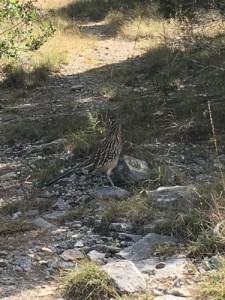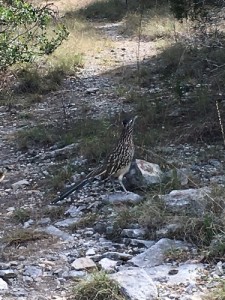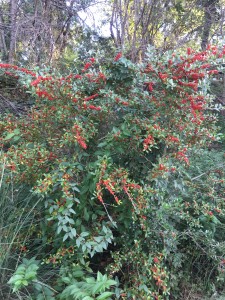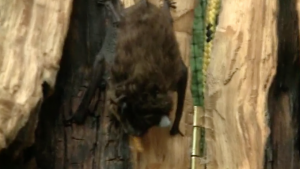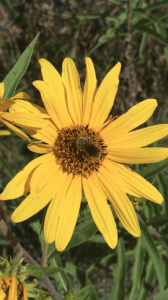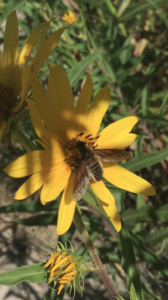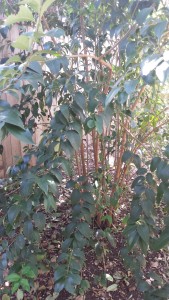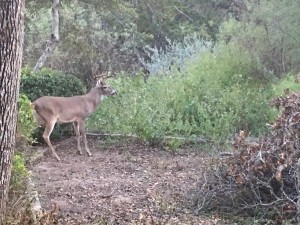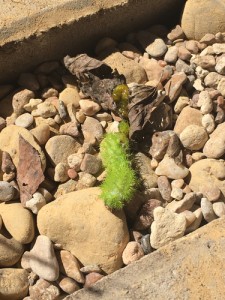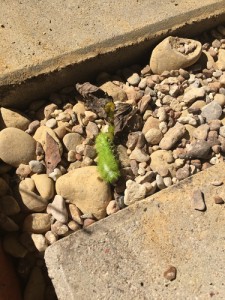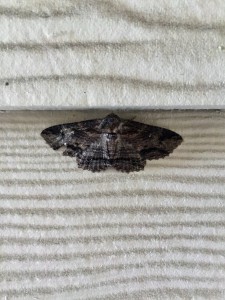This butterfly was flying around a patch of flowers nearby the mailroom as I went to get the mail. I put my observation on iNaturalist in the “Butterflies and Moths” category first, then I misnamed it the “Orange Sulphur.” Luckily someone helped me to get the proper ID of Phoebis sennae, or Cloudless Sulphur. This butterfly is widespread throughout the U.S., especially in the southern states, and can even be seen into Canada and South America, but it is very rarely seen in the northwestern states.
Males and females look slightly different. The male has a lemon yellow upper surface with no markings. Males are also seasonally dimorphic; their winter forms are larger and have darker markings ventrally. The female is yellow or white with irregular brown or black markings and the upper forewing has a dark spot in the cell. In both sexes, there are two silver spots in the lower surface of the hindwing. With these differences, I think the one I photographed was a female. Larvae are green with yellow lateral lines and transverse bands of blue spots or yellow with black transverse bands. Whether the larvae are green or yellow depends on what they feed on; if they eat green leaves, they will be green and if they eat yellow blooms they will be yellow. Caterpillar host plants are Cassia/Senna plants, of the pea family; these plants are considered weeds and are actually poisonous. Adults are attracted to purple, red, and orange flowers with long tubes.
When these butterflies are breeding, they can be found in disturbed open areas where they can find their host plants and nectar, such as parks, beaches, yards, gardens, road edges, and abandoned fields, but when migrating, they can be found in all kinds of habitats. They migrate south in the fall, to avoid frigid temperatures in the north in the winter, and then they fly back north in the spring.
My iNaturalist post can be found here.
Sources:
http://www.butterfliesandmoths.org/species/Phoebis-sennae
http://entnemdept.ufl.edu/creatures/bfly/bfly2/cloudless_sulphur.htm

